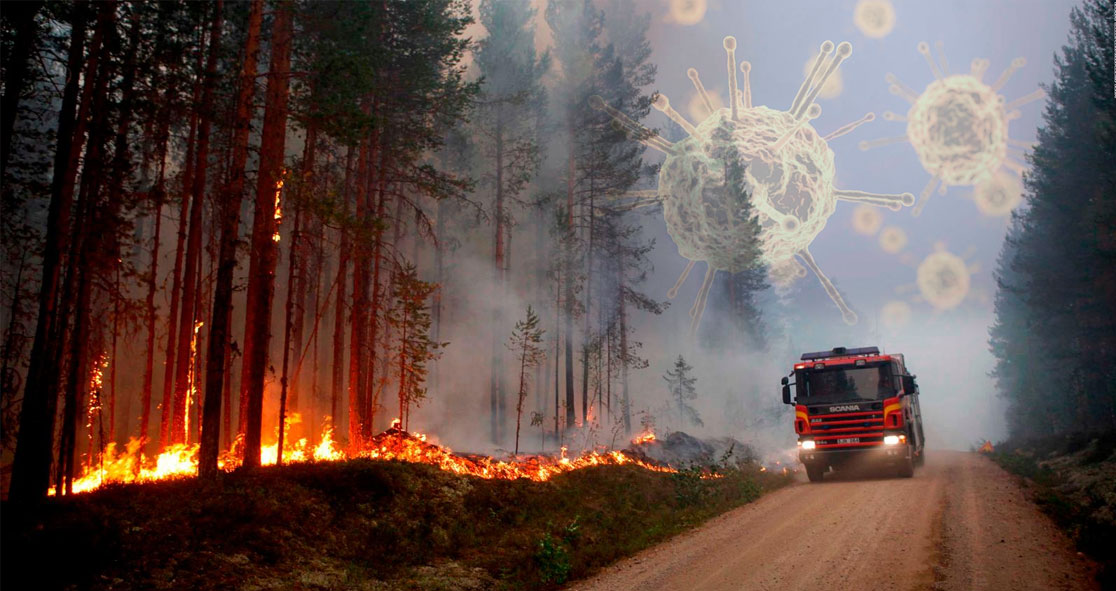The COVID-19 pandemic, which has so far killed more than 308,000 Americans, took control over the United States in March, as the annual severe weather season was kicking off.
While many states were issuing lockdown restrictions and urging people to stay home, weather forecasters were warning of flooding, tornadoes, hurricanes, heat waves, and wildfires.
Health officials were worried that people would hesitate to leave their homes in case of an emergency evacuation.
The novel coronavirus, called SARS-CoV-2, made weather-related emergencies and disasters more complicated. There were many instances where the COVID pandemic and weather collided this year, making things worse.
For example, the American Red Cross offered overnight shelter to more than 1 million people during weather-related evacuations this year.
Greta Gustafson, a Red Cross spokesperson, told recently to weather.com, “2020 was an unprecedented year on so many levels, and disaster response-wise [it] was no different.”
“In the biggest disasters the Red Cross responded to – wildfires in California and Oregon and hurricanes in Louisiana – 90% of the overnight stays were in individual hotel rooms,” Gustafson added. “Even myself – as a worker – I had to get my temperature taken, I needed to make sure that I was wearing a mask, and there was hand sanitizer everywhere.”
In another incident, at least five employees of the National Oceanic and Atmospheric Administration (NOAA) tested positive for COVID-19 in July. There were no indications the outbreak affected hurricane forecasting, but the pandemic did change the way flights operated, according to weather.com.
The World Meteorological Organization (WMO) said the number of aircraft weather observations across the world had dropped 75 to 80% by May this year.
A WMO report said, “The crisis has provided a reminder of the danger of over-reliance on observations of opportunity, such as aircraft-based observations. While these data are unquestionably highly valuable … the COVID crisis has shown that their availability is determined entirely by commercial and operational constraints of the airlines that provide them.”
The report added, “It will be crucial to maintain a certain level of investment in core observations” for the specific purpose of weather, climate, and the environment.
There were other challenges the world had to face when the pandemic collided with extreme weather changes. Critical climate research was suspended or shortened and firefighters had to battle the new virus too.
Another challenge in front of us is a long, dark winter. As we are about to enter such extreme climatic changes, the convergence of COVID and weather is showing no sign of abating.
Public health officials correctly predicted that the number of new coronavirus cases would increase in the fall and winter, as people tend to gather indoors more in cold weather.
Michael Basford of Wisconsin’s Department of Administration’s Interagency Council on Homelessness told Wisconsin Public Radio, “The challenge is going to be extreme this winter.” The article was originally published on weather.com.























